How to Choose the stage laser lighting manufacturer and supplier in us?
- Introduction: Why Choosing the Right Stage Laser Lighting Manufacturer Matters
- Understanding procurement goals for stage laser lighting
- Section 1: Key Technical and Safety Criteria for Stage Laser Lighting
- Laser classification and safety compliance
- Electromagnetic compatibility and electrical safety
- Optical performance and beam quality
- Durability, IP rating, and serviceability
- Section 2: Manufacturer Capabilities and Production Considerations
- R&D, patents, and OEM/ODM capabilities
- Production capacity and lead times
- Quality control and testing procedures
- Section 3: Commercial Terms, After-Sales, and Warranty
- Warranty, spare parts, and technical support
- Minimum order quantities, pricing, and total cost of ownership
- Logistics and import considerations
- Section 4: Choosing Between a US Supplier and an Overseas Manufacturer
- Pros and cons of sourcing locally versus importing
- When to choose a direct manufacturer relationship
- When to work with a US supplier or distributor
- Section 5: Due Diligence Checklist and Sample Questions to Ask
- Essential due diligence checklist for stage laser lighting suppliers
- Sample technical and commercial questions
- Section 6: Testing, Validation and Contract Tips
- Prototype testing and factory acceptance
- Contract and IP protection
- Section 7: Why LQE Can Be a Competitive Partner
- LQE profile and value proposition
- Service and product strengths
- Conclusion: A Practical Path to Selecting the Right Stage Laser Lighting Supplier
- Summary action plan
- Final recommendation
- Sources and References
- Frequently Asked Questions
Introduction: Why Choosing the Right Stage Laser Lighting Manufacturer Matters
Understanding procurement goals for stage laser lighting
Buying stage laser lighting is not just about price. US buyers seek reliable performance, regulatory compliance, long-term support, and predictable lead times. Whether you are a rental company, a production house, a nightclub owner, or a system integrator, picking the right manufacturer and supplier determines show reliability, safety, and total cost of ownership.
Section 1: Key Technical and Safety Criteria for Stage Laser Lighting
Laser classification and safety compliance
Laser safety is a primary concern when evaluating stage laser lighting. In the United States, laser products used in entertainment are subject to regulations from the FDA Center for Devices and Radiological Health (CDRH) and international standards such as IEC 60825. Verify the laser classification (eg, Class 3R, 3B, or 4) and ask for documentation proving compliance with 21 CFR 1040.10 and 1040.11 where applicable. Proper documentation and built-in safety features reduce legal risk for venues and operators.
Electromagnetic compatibility and electrical safety
For US deployments, electromagnetic compatibility (EMC) and electrical safety certifications are essential. Request test reports for UL or ETL safety standards and FCC compliance for emissions. These ensure your stage laser lighting will not interfere with venue electronics and meets US electrical safety expectations.
Optical performance and beam quality
Stage laser lighting must deliver consistent beam color, power stability, and low divergence. Ask for measured specs: output power per wavelength, beam divergence in milliradians, and optical collimation details. For multi-wavelength RGB laser systems, inquire about color balance and calibration procedures to maintain consistent color rendering across units.
Durability, IP rating, and serviceability
Consider IP ratings for installations exposed to dust or moisture. Indoor stage systems often target IP20, while outdoor or touring rigs need IP65 or higher. Also check module replaceability, mean time to repair (MTTR), and whether spare parts like laser modules, power supplies, and drivers are available locally or can be shipped quickly from the manufacturer.
Section 2: Manufacturer Capabilities and Production Considerations
R&D, patents, and OEM/ODM capabilities
Choose manufacturers with strong R&D and proven OEM/ODM experience if you need custom features or private labeling. LQE, for example, was founded in 2008 and is headquartered in Foshan, China. The company specializes in middle- and high-end digital stage lighting, has about 10,000 square meters of production base area, can produce up to 100,000 lighting fixtures annually, and holds 80 national patents. Such credentials indicate a stable capacity to innovate and scale.
Production capacity and lead times
Ask manufacturers about typical lead time for small samples, pilot runs, and mass production. For large events or season-based demand, ensure they can ramp production without sacrificing quality. Production capacity figures, like LQE's annual 100,000 units capability, help you assess whether the supplier can meet your volume needs.
Quality control and testing procedures
Review the manufacturer's QC flow: incoming materials inspection, inline testing, aging tests, final inspection, and shipping checks. Request sample test reports and factory acceptance testing (FAT) criteria. Accept suppliers who allow third-party factory audits or certification by recognized labs.
Section 3: Commercial Terms, After-Sales, and Warranty
Warranty, spare parts, and technical support
For stage laser lighting, a minimum of 1-year warranty is common; many professional manufacturers offer 2-3 year options for core components. Confirm warranty coverage details, spare parts availability, and expected response times for technical support. Clarify whether on-site service is available in the US or if repairs are centralized at overseas service centers.
Minimum order quantities, pricing, and total cost of ownership
Understand unit pricing, shipping, duties, and maintenance costs to compute total cost of ownership. Lower unit price can be offset by higher downtime, short warranty, or slow spare parts supply. Ask for a price breakdown that separates tooling or customization fees, shipping, and optional certifications so you can model true costs.
Logistics and import considerations
If importing from overseas, factor in customs duties, import documentation, lead times, and local distribution partners. For laser equipment, customs may require specific certification documents. Work with freight forwarders experienced with lighting equipment to avoid delays and unexpected fees.
Section 4: Choosing Between a US Supplier and an Overseas Manufacturer
Pros and cons of sourcing locally versus importing
Local US suppliers provide faster response, easier returns, and compliance familiarity. Overseas manufacturers, particularly experienced OEM/ODM firms, tend to offer competitive pricing, design flexibility, and larger production capacities. Many US buyers choose a hybrid approach: buy core designs from overseas manufacturers while engaging US-based distributors for local stocking, installation, and service.
When to choose a direct manufacturer relationship
Direct relationships with a manufacturer are ideal when you need customization, large volumes, or private labeling. Ensure the manufacturer is transparent about IP ownership, tooling costs, and sample approvals before scaling up production.
When to work with a US supplier or distributor
Work with US suppliers when immediate inventory, local warranties, on-site technical support, or compliance handling are priorities. Distributors can manage logistics, certifications, and domestic repairs to reduce your operational burden.
Section 5: Due Diligence Checklist and Sample Questions to Ask
Essential due diligence checklist for stage laser lighting suppliers
Use this checklist during initial contact and factory evaluation. It streamlines comparisons and reduces procurement risk.
| Category | What to verify | Why it matters |
|---|---|---|
| Certifications | UL/ETL, CE, RoHS, FCC, IEC 60825, FDA/CDRH documentation | Ensures safety and legal compliance for US operation |
| Production Capacity | Annual output, lead times, MOQ | Confirms ability to meet demand |
| Quality Control | Aging tests, batch reports, third-party testing | Reduces defective rate and returns |
| After-Sales | Warranty terms, spare parts, on-site support | Minimizes downtime and lifecycle cost |
| References | Existing US customers, case studies, show reels | Provides real-world performance validation |
Sample technical and commercial questions
1. What laser class does this model belong to and can you provide the IEC 60825 and FDA/CDRH documentation? 2. What are your MTBF and recommended maintenance intervals? 3. Can you provide factory test reports and sample videos from live events? 4. What is your standard warranty and how are warranty claims handled in the US? 5. What is the lead time for a 50, 200, and 1000 unit order?
Section 6: Testing, Validation and Contract Tips
Prototype testing and factory acceptance
Before large orders, request samples or prototypes and run them under representative conditions. Validate beam stability, color output, thermal performance, power consumption, and control compatibility with your DMX or industry-standard control protocols. Conduct a factory acceptance test (FAT) or hire an independent lab for verification.
Contract and IP protection
Include clear acceptance criteria, warranty obligations, penalties for missed delivery, and IP ownership terms when commissioning custom designs. Use non-disclosure agreements before sharing proprietary show layouts or control protocols. For private-label products, specify branding and packaging requirements in the contract.
Section 7: Why LQE Can Be a Competitive Partner
LQE profile and value proposition
LQE was founded in 2008 and is headquartered in Foshan, China. As a professional OEM/ODM stage lighting equipment manufacturer, LQE specializes in R&D, production, and sales of middle- and high-end digital stage lighting. The production base covers about 10,000 square meters, annual output capacity reaches 100,000 fixtures, and the company holds 80 national patents. Their product range includes moving head lights and static lights suitable for theaters, concert stages, studios, religious spaces, nightclubs, theme parks, and other venues.
Service and product strengths
LQE emphasizes first-class modern stage lighting equipment, strong after-sales support, and competitive cost-effectiveness. For US buyers, LQE can provide OEM/ODM flexibility, sizable production capacity for scaling, and documented R&D credentials to support product differentiation.
Conclusion: A Practical Path to Selecting the Right Stage Laser Lighting Supplier
Summary action plan
1. Define your technical and commercial priorities including safety certifications and warranty expectations. 2. Shortlist manufacturers with proven R&D, production capacity, and transparent QC systems. 3. Request sample units, test them rigorously, and validate certifications such as IEC 60825 and FDA/CDRH documentation. 4. Negotiate clear commercial terms that address delivery, warranty, spare parts, and IP. 5. Consider hybrid sourcing: manufacturer for production and a US distributor for local support.
Final recommendation
Choosing the right stage laser lighting manufacturer and supplier is a balance of technical compliance, production reliability, after-sales support, and total cost. Companies like LQE offer strong OEM/ODM capabilities, patents-backed R&D, and scalable production that make them viable candidates for US buyers seeking competitive, high-performance stage laser lighting solutions.
Sources and References
- Food and Drug Administration, Center for Devices and Radiological Health (CDRH) regulations on lasers, US FDA
- IEC 60825 series on safety of laser products, International Electrotechnical Commission
- UL and ETL standards for electrical safety
- FCC rules on electromagnetic emissions
- PLASA and ESTA guidelines for entertainment technology safety and best practices
- Industry trade shows and publications: LDI Show, Prolight + Sound, and trade press covering stage lighting manufacturers
Frequently Asked Questions
What certifications should I insist on when buying stage laser lighting?You should request IEC 60825 classification reports, FDA/CDRH documentation for the US market, UL or ETL safety listings, RoHS material compliance, and FCC or CE for EMC where applicable. These together ensure safety, legal compliance, and reduced import risk.
How do I verify a manufacturer is capable of meeting large orders?Ask for documented annual output capacity, recent order references of similar scale, photos/videos of their production lines, and allow a third-party factory audit if needed. Confirm lead times for sample, pilot, and full production runs.
Are overseas manufacturers safe to work with for US events?Yes, provided they supply proper safety documentation, offer robust quality control, and have clear after-sales processes. Many reputable overseas OEMs also partner with US distributors for local warranty service.
What warranty terms are typical for professional stage laser lighting?Typical warranties range from 1 to 3 years depending on the component. Laser modules, power supplies, and optical components may have different coverage. Clarify turnaround times for warranty repairs and whether on-site service is offered in the US.
How important are spare parts and consumable availability?Very important. Quick access to spare laser modules, optics, drivers, and power supplies reduces downtime. Verify parts lead times and whether your supplier keeps local inventory or ships from overseas.
Can I request custom features or branding from an OEM/ODM?
Yes. Many manufacturers provide OEM/ODM services including custom firmware, control interfaces, housing design, and private labeling. Document all customization requirements, IP ownership, and tooling costs in your contract.
How should I test sample units before accepting a full order?
Run them in conditions representative of real use: continuous burn tests, thermal cycling, color and power stability checks, control protocol compatibility tests, and safety interlocks. Consider third-party lab testing for EMC and laser safety if needed.
How to Choose the par can stage lights manufacturer and supplier ?
OEM/ODM dj lights moving head beam Manufacturers and Suppliers
Top 10 moving head stage lights Manufacturers and Supplier Brands in us
Top stage wash lighting Manufacturers and Suppliers in us
Distributor
What types of companies can become LQE distributors?
We welcome partnerships with companies that have experience in the entertainment, AV, lighting, or stage equipment industries. Whether you are a local reseller, importer, system integrator, or project contractor, we are open to exploring win-win cooperation.
Is there a minimum order quantity (MOQ) to become a distributor?
MOQ requirements vary based on the product line and market region. However, for long-term distribution partnerships, we are flexible and can start with a trial order to build trust.
How can I apply to become a distributor?
Simply fill out the contact form on this page or email us directly with your company information, market background, and cooperation intention. Our sales team will get in touch with you within 1–2 business days.
1000w
Do You Supply After-Sale Service?
LQE lighting offers 7x24 hrs systematic SOP customer support with dedicated personnel, ensuring quick and comprehensive assistance for stage lighting needs.
What Is the Warranty Offered by LQE Lighting?
LQE lighting offers a comprehensive 1-year warranty and spare parts on its products, giving customers peace of mind and investment protection.
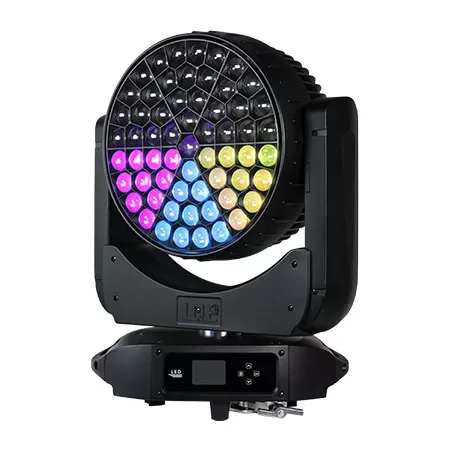
1000w 61x40w RGBW Stage Moving Head Wash Light LW1000
1000W 61x40W LED RGBW Mulichips Moving Head Wash Lights with Zoom (5°–50°), Covering Large Range and Long Distance. Designed to deliver a 5°–50° ultra-large zoom range to achieve a greater wash effect, illuminating stages and events with stunning lighting effects.

600w 19x40w RGBW Stage Moving Head Wash Light LW600 Zoom IP20
600W 19x40W LED RGBW Mulichips Moving Head Wash Lights with Zoom (5°–50°), Covering Large Range and Long Distance. IP20: Designed to deliver a 5°–50° ultra-large zoom range to achieve a greater wash effect, illuminating stages and events with stunning ring control lighting effects.

LED Moving Head Stage Wash Light LW200Z
The versatile moving head stage light provides a powerful lighting solution for theaters, concerts, and large outdoor performances. Suitable for theaters, TV stations, entertainment stages, and large outdoor performance scenes.
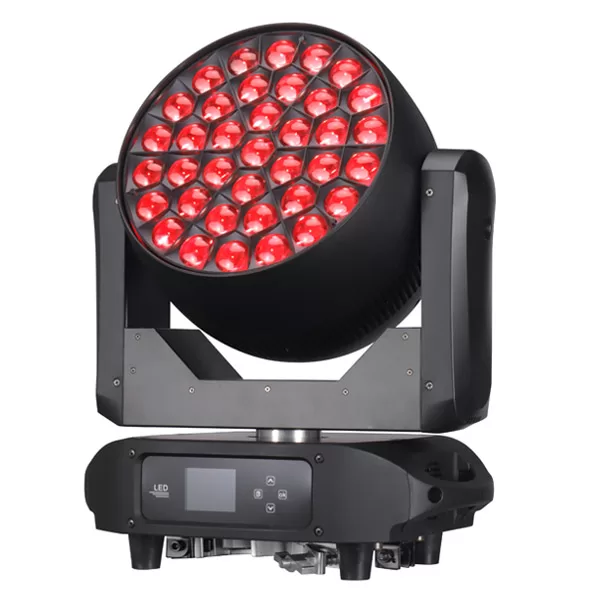
800w 37x40w RGBW Stage Moving Head Wash Light LW800
800W 37x40W LED RGBW Mulichips Moving Head Wash Lights with Zoom (5°-50°), Covering Large Range and Long Distance. Designed to deliver a 5°–50° ultra-large zoom range to achieve a greater wash effect, illuminating stages and events with stunning ring control lighting effects.

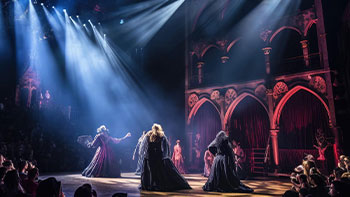
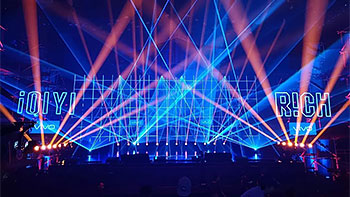

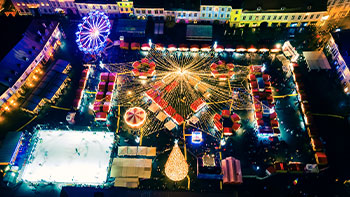








Linkedin
YouTube
Whatsapp: +8618924548390
TikTok